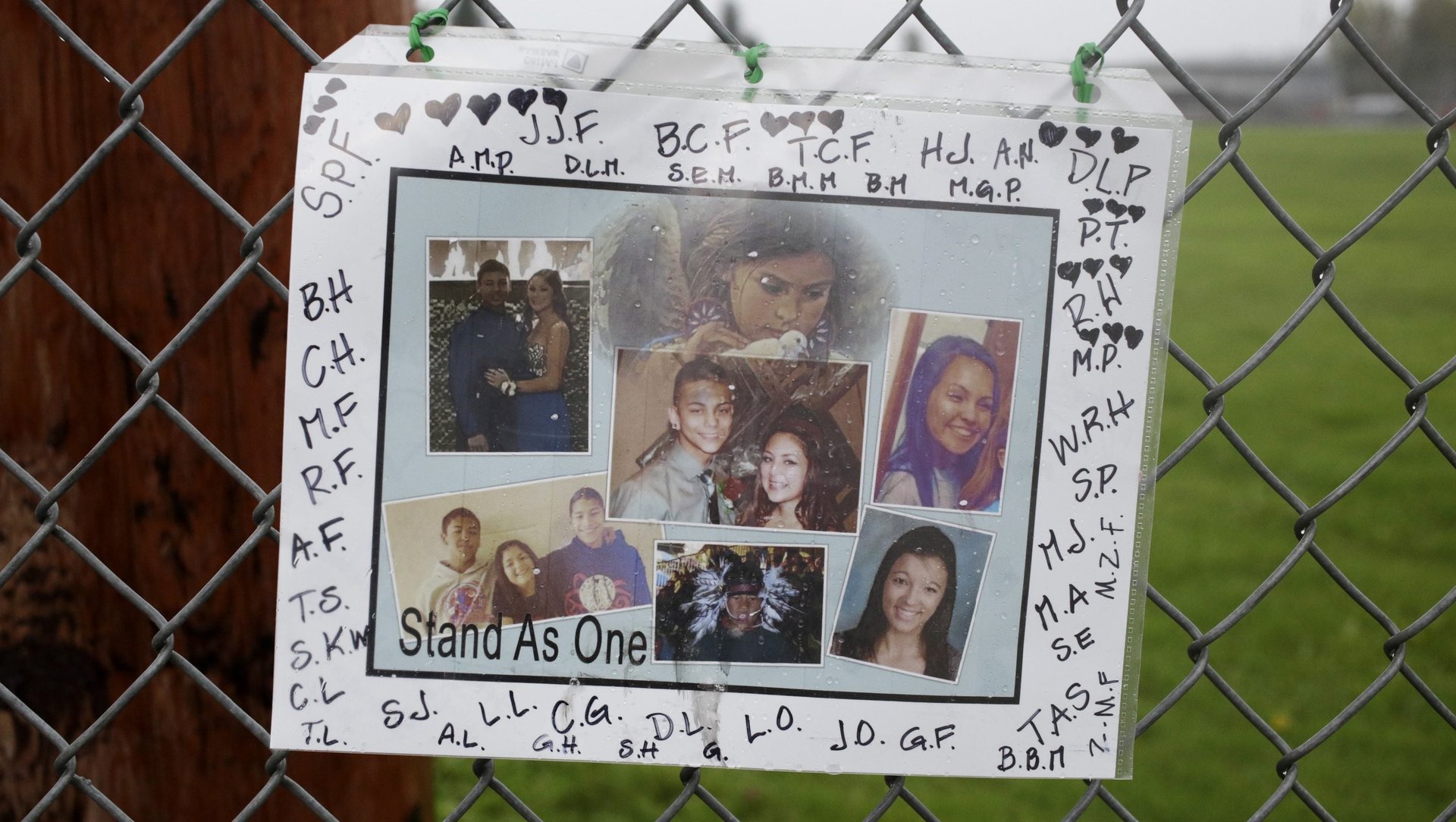New research tracks the way violence spreads “like a virus” among teens who don’t know each other
The US Center for Disease Control and Prevention classifies youth violence in the country as a public health problem. As the third leading cause of death for young people between the ages of 15 and 24, it beats out cancer, heart disease, and congenital anomalies.


The US Center for Disease Control and Prevention classifies youth violence in the country as a public health problem. As the third leading cause of death for young people between the ages of 15 and 24, it beats out cancer, heart disease, and congenital anomalies.
Solving violence isn’t like curing or preventing an illness, though—except maybe it sort of is. A new study published in the American Journal of Public Health published today (Dec. 20) finds that violence among teenagers spreads through networks of friends, like a contagious disease: adolescents, research found, were much more likely to commit acts of violence if their friends have done so.
The data used for the study came from a sample of 5,913 young people, aged 12 to 18, from 142 schools across the US who participated in the National Longitudinal Study of Adolescent Health. They were interviewed in 1994-95 and again one year later.
Participants nominated five female friends and five male friends, and the researchers studies these networks. They found that teenagers were 48% more likely to have been involved in a serious fight, 183% more likely to have gravely injured someone, and 140% more likely to have pulled a weapon, if they had a friend who had committed the same act.
Not only is this true for people that are directly connected, but the violence virus can spread up to two degrees of separation (i.e., to friend of a friend) for hurting someone badly, three degrees of separation for pulling a weapon on someone, and four degrees of separation for getting into serious fights.
The degree of likelihood declines with each degree of separation. For instance a teenager is 48% more likely to get into a serious fight if a friend is involved in one, but only 18% more likely to get into a serious fight if a friend of a friend has been in a serious fight. In other words, high school social networks are webs through which violent behavior travels and the impact becoming more diluted as it travels farther.
“To become violent yourself, all you have to do is be exposed to it,” says Brad Bushman, professor of communication and psychology at Ohio State University and a co-author of the study. “Violence is like a contagious disease, it spreads from person to person.”
Bushman says the finding has implications for how to contain violence among young people. He has two suggestions: First, we should try to prevent teenagers from being exposed to sources of the virus—the violent act itself—by keeping teenagers from spending time with young people who have committed violent acts. Second, if a teen has been exposed to violence, we can “cure” the virus, by teaching them other ways to get what they want besides resorting to violence—training them in pro-social behaviors such as negotiating, compromise, sharing, and empathy.
“Prosocial behavior also spreads in networks,” says Bushman. “If you teach somebody how to be less aggressive, that also spreads in their network to their friends and their friend’s friends.